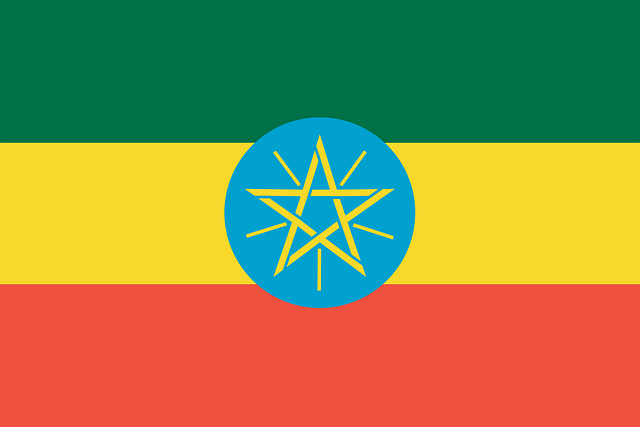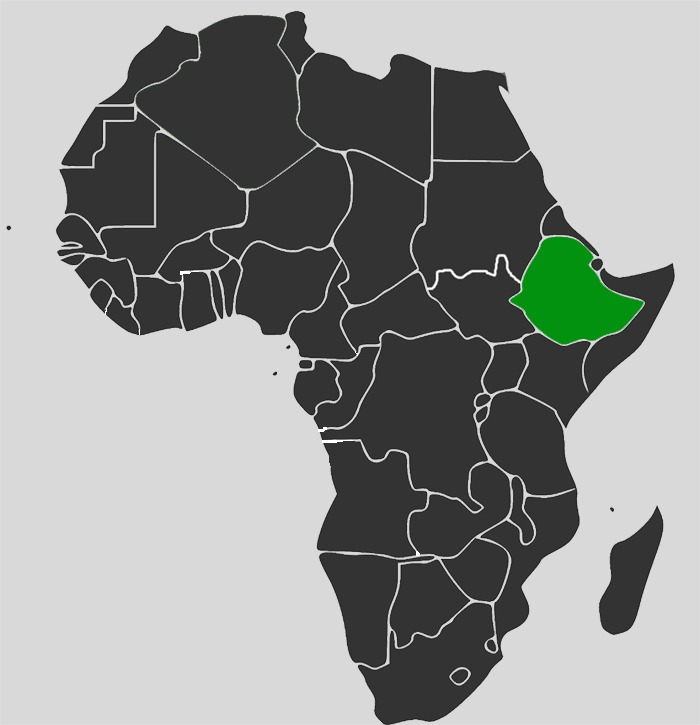Ethiopia
Total Population
109 million
Deaf Population
2.5 Million
Number of Sign Language Users
Nation's Official Language(s
Amharic, Afan Oromo, Tigrigna, Afar and Somali (5 official language)
Other Languages
The number of established languages listed in Ethnologue is 92. Some of these are:
- Aari
- Alaba
- Anuak
- Argobba
- Awngi
- Basketo
- Bench
- Berta
- Borna
- Burji
- Daasanach
- Dawro
- Dorze
- Gamo
- Gedeo
- Geez
- Gofa
- Gumuz
- Hadiyya
- Hamer-Banna
- Harari
- Hozo
- Kafa
- Kambata
- Karo
- Kistane
- Komo
- Konso
- Kunama
- Libido
- Majang
- Male
- Mesqan
- Mositacha
- Mursi
- Nuer
- Oyda
- Qimant
- Saho
- Sidamo
- Silte
- Wolaytta
- Xamtanga
- Zay
- Zayse
Name of Sign Language
Ethiopian Sign Language (EthSL)
Overview Of Deaf Community And Education
As was noted in Tamene (2017), the Ethiopian Deaf community is characterized by the following features: (1) it is a community that represents a large stable signing group showing considerable influence from ASL; (2) the majority of the community’s members (up to 90 %) learn sign language at school and Deaf clubs because their parents are hearing and unable to teach their children sign language at home; and (3) members are bilingual by default and sometimes also multilingual. These features suggest that the Ethiopian Deaf community is a Deaf macro-community or an urban sign language community (Fenlon & Wilkinson, 2015).
For the past several decades, the Ethiopian Deaf community has often been referred to as duda [mute] (a misnomer) or dänk’oro [deaf]. These terms are now considered derogatory. Instead a “fine” name is used currently, mäsmat yätäsanaččäw [hearing impaired]. Unlike spoken languages, which typically have a geographical area of usage, EthSL users are dispersed within individual families of a spoken community. Relatively speaking, urban areas have a higher concentration of Deaf people than rural areas due to the existence of Deaf organizations, places that conduct religious services for Deaf people, social places where the Deaf community could gather and, most importantly, schools for the deaf. In Addis Ababa, an urban area, there are more than eleven educational institutions enrolling deaf students ranging from kindergarten to university.
Sign Language Overview
The sign language used in Ethiopia and in the Ethiopian Deaf Community in the diaspora is known as Ethiopian Sign Language (EthSL) (Tamene, 2017). The sign language that is now in use in Ethiopia used to have various names such as Amharic Sign Language, deaf language, and sign language. It was only recently, after the publication of the EthSL dictionary (2007) that the language was known as Ethiopian Sign Language. The acronym ESL was changed to EthSL soon after the launching of the BA program in sign language at Addis Ababa University in 2008, in order to distinguish it from the commonly used acronym referring to English as a Second Language.
There is variation across the country based on the schools; for example, the Hossana School for the Deaf is perceived as using a different variety to the one used in the capital Addis Ababa. It apparently has more indigenous signs since other schools have been influenced by sign languages from outside. EthSL has been influenced by American Sign Language (ASL), Nordic sign languages, and also International Sign. Research in 2012 indicated that ASL was comprehensible to EthSL signers.
Fingerspelling reproduces manually the written spellings of a spoken language. Almost all sign languages in the world have manual alphabets that are based on a spoken language that is dominant in the society. EthSL has its own Ethiopian Manual Alphabet (EMA) modeled on fidäl, (the Ethiopic script) with 34 handshapes, which represent the consonants75. There are seven forms of vowels, each of which is distinguished by moving the consonants differently (Figure 1). Therefore, in total there are 238 manual letters. For instance, the first fidäl syllabary ha(ሀ) has seven vowels including itself፡ ha(ሀ), hu(ሁ), hi(ሂ), ha(ሃ), he(ሄ), hɨ(ህ), ho(ሆ). Similarly, all the remaining 33 signs have the same vowel patterning. In Figure 1, numbers are written underneath to Ethiopian Manual Alphabet to show the order of the vowels (Tamene, 2017).
EMA, is probably the only African finger spelling used in Ethiopia, whereas the rest of the countries use the derived form of American manual alphabet.
Deaf Organizations In Country
Social Organization
- Ethiopian National Association of the Deaf (ENAD)
- Deaf Development and Information Association (DDIA)
- Rehabilitation Services for the Deaf (RSDA)
- Timihirt Mesmat Letesanachew Hibret
- Maleda Deaf Charity Organization
- Deaf Community Development Organization
Religious Institution
- Ethiopian Orthodox Church
- Ethiopian Muslim Instituion
- Ethiopian Evangelical Mekane-Yesus Church
- Jehovah’s Witnesses
Overview of Interpreting Services
There are some trained interpreters from Deaf Action (Scotland) and some volunteer interpreters. The news is interpreted daily and some other national events. Some interpretation takes place in health settings. The government together with the deaf association runs some courses in Swazi SL for health workers.
Sign Language Resources In The Country
Resources
List of Contributors
Alemayehu Teferi , Eyasu Hailu Tamene, Woinshet Girma



